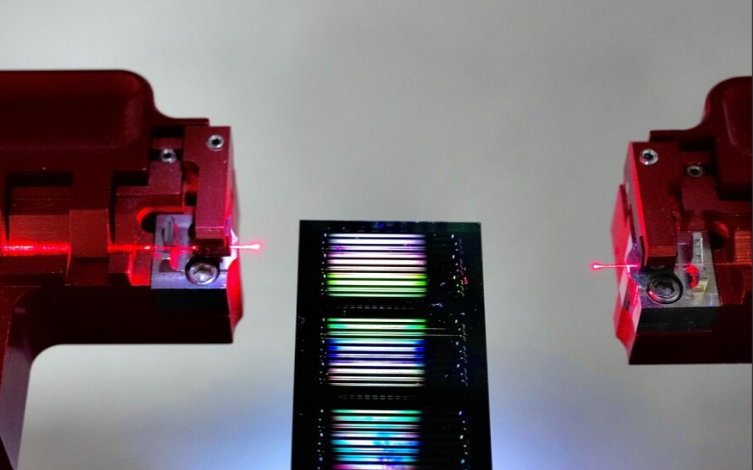Insider Brief
- Quantum technologies could generate up to £8 billion in economic value for the UK transport sector by 2035, offering benefits in areas such as traffic optimization, cyber-secure communications, and precise navigation, according to the Department for Transport (DfT).
- Applications highlighted in the report include reducing congestion costs by £2.8 billion annually through quantum-powered traffic management and enhancing transport cybersecurity with quantum key distribution (QKD) to mitigate risks in a “post-quantum” era.
- Quantum sensing technologies, expected to achieve widespread commercialization within five years, could save millions annually by improving underground mapping, railway maintenance, and autonomous navigation in GPS-denied environments.
Quantum technologies could generate up to £8 billion in economic value for the UK transport sector by 2035, according to a report from the Department for Transport (DfT).
While there is a proverbial long road ahead, the study explores how advances in quantum computing, communication and sensing could tackle long-standing challenges in the industry, from optimizing traffic flow to protecting critical infrastructure from cyberattacks.
The team, which includes analysts from Resonance, reports that, although these technologies remain at varying levels of development, they offer transformative potential in a range of transportation-related uses. Applications range from real-time logistics optimization to autonomous navigation in GPS-denied environments, offering the prospect of safer, more efficient, and resilient transport systems.

The Promise of Quantum Computing in Transport
Quantum computers, capable of processing larger – potentially exponentially larger – datasets than classical computers, could fundamentally change how transport systems handle complex optimization problems. These challenges, such as minimizing traffic congestion, improving cargo loading, and optimizing staff schedules, are critical to the efficiency and sustainability of transport networks.
The report cites a simulation by Fujitsu showing that quantum-enabled traffic management systems could reduce travel times by 40%. This would represent a savings of £2.8 billion annually, addressing the UK’s £6.9 billion yearly congestion costs. Similarly, quantum optimization could enhance supply chain efficiency, saving an estimated £1.2 billion by 2035 through better logistics planning.
Beyond logistics, quantum computing could accelerate innovation in materials science and energy storage. By integrating quantum computers with existing high-performance computing (HPC) systems and AI models, researchers could unlock new approaches to designing lightweight vehicles, more efficient batteries, and advanced building materials.
However, the report notes that fully fault-tolerant quantum computers, which are essential for solving some of the most complex problems, may not be commercially viable until 2035. In the meantime, hybrid quantum-classical systems are already being tested for practical applications.
Quantum Communications For Protection Against Transport-aimed Cyberattacks
As the transport sector becomes increasingly reliant on digital infrastructure, ensuring the security of communication networks is important. Quantum key distribution (QKD) and other quantum-secured technologies could provide ultra-secure communication channels, safeguarding transport systems from cyberattacks in a “post-quantum” era.
In this scenario, advanced quantum computers could decrypt current encryption methods, exposing critical transport data to malicious actors. The report highlights the potential cost of a disruption to Global Navigation Satellite Systems (GNSS), which could reach £1.4 billion per day by 2035. Quantum-secured networks could mitigate these risks, ensuring the integrity of critical infrastructure and protecting passenger safety.
The DfT report also emphasizes the role of quantum communication technologies in enabling secure vehicle-to-vehicle (V2V) and vehicle-to-infrastructure (V2I) communication. These applications could be critical for the safe deployment of autonomous vehicles and intelligent transport systems.
Quantum Sensing Could Guide Transportation Innovation
Quantum sensors, which exploit quantum properties to achieve unprecedented levels of accuracy, could have a wide range of applications in transport. The report identifies several areas where quantum sensing could provide immediate benefits, including underground mapping for construction, railway signaling, and autonomous navigation.
For instance, quantum gravimeters could enhance safety by detecting underground voids or preventing accidental strikes during construction, potentially saving up to £200 million annually. In autonomous vehicles, quantum inertial navigation systems could offer reliable positioning in GPS-denied environments, such as tunnels or urban canyons.
Other applications include advanced leak detection for pipelines and improved monitoring of offshore drilling sites, reducing environmental risks and operational costs. These technologies could also enhance railway maintenance by detecting microfractures in tracks before they lead to accidents.
Risks of Inaction
The report warns that failing to adopt quantum technologies could leave the UK transport sector vulnerable to economic and security risks. A key concern is the potential for hostile actors to use advanced quantum computers to break existing encryption methods, disrupting transport networks and causing significant economic damage.
Delays in adoption may also result in missed opportunities for economic growth. The report estimates that the projected £4-8 billion in value by 2035 represents only a fraction of the potential benefits, particularly as advancements in AI and quantum technologies accelerate.
Roadmap for Quantum Development
The DfT outlines a phased timeline for quantum technology adoption in transport. Quantum sensing systems are expected to achieve widespread commercialization within five years, with applications like gravimeters and magnetometers reaching scale by 2028. Quantum communication technologies, such as satellite-based QKD, are likely to become more common by 2030, while fully operational quantum networks may not materialize until after 2035.
The development of fault-tolerant quantum computers is expected to follow a longer trajectory, with significant commercial impact projected for the late 2030s and beyond. These systems will be essential for solving the most complex problems in transport, such as fluid dynamics for aviation or real-time optimization of global logistics networks.
Overcoming Challenges
Despite their potential, the analysts acknowledge that quantum technologies face several hurdles before they can achieve widespread adoption. Quantum computers, which are extremely sensitive devices, must address issues such as environmental sensitivity and error rates, which currently limit their reliability. Similarly, quantum sensors and communication systems require advances in miniaturization and integration with existing infrastructure.
The report notes that significant investment in research, development and workforce training will be needed to overcome these challenges. Public-private collaboration will also be crucial to ensuring that quantum technologies are deployed in ways that align with national security and economic priorities.
However, the analysts note that by 2035, quantum technologies could be in a position to redefine how the UK manages its transport networks, offering smarter, more resilient, and environmentally sustainable solutions, which ultimately suggests that while uncertainties remain, the potential rewards for early adoption are substantial.
About Resonance
Resonance is the leading provider of market intelligence across deep technology verticals. It owns and operates a portfolio of media and intelligence offerings for the strategic integration of breakthrough technologies that are poised to transform our world (The Quantum Insider, Space Impulse, Metaverse Insider, Climate Insider and AI Insider). These intelligence platforms collect and synthesize extensive data from an array of sources within complex, emerging industries, creating actionable insights that pave the way for intelligent collaborations, smart investments and innovative scientific advances. The business serves hundreds of clients – ranging from startups to national governments – with its SaaS subscription intelligence, strategic advisory and marketing offerings.

















